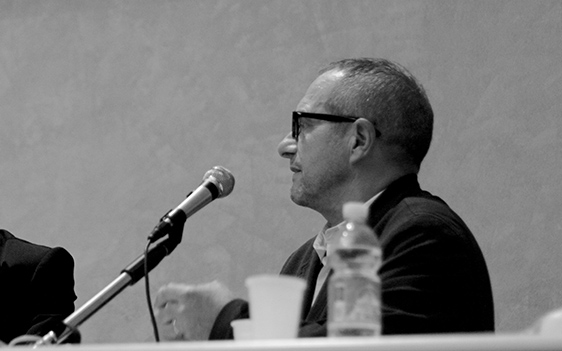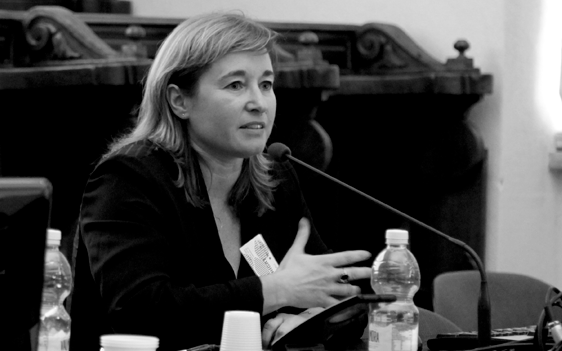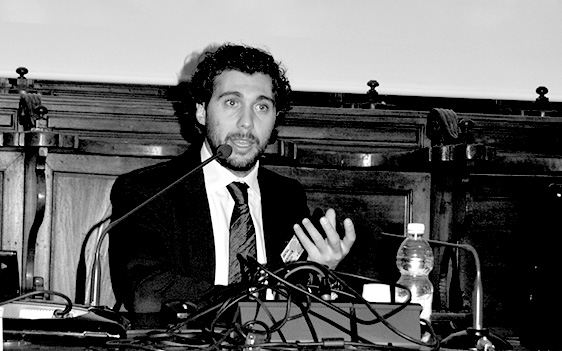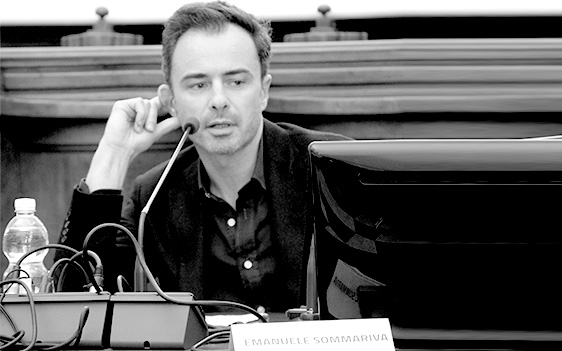
GENERAL LECTURE #5 | THE ETHERNAL PRESENT
In the movie “Only Lovers left Alive” (2013) two vampires live in Detroit in a constant situation of danger, therefore they can still perceived the beauty of the environment around them and rejoice from the dramatic and gothic context. In our era, we, – artists, architects -, are the vampires. Those who have an aesthetic sense of the world, those who care about the quality of the landscape, the people that continue to see the beauty in the city never die.
Today, in many different artistic and aesthetically fields, – like movies, art or fashion -, we can see how things look like the same that in the ‘60s or the ‘80s, nothing it’s really changed, everything looks actual.
This perception affect also architecture and design as well. We can see similar projects through the year and detect analogies in different attitudes and space solutions. What does it means for us now?
The point is the way in which future is imagined and designed. As we can see, in many times, the future is very similar to our today, it is like a unique and continuous phase, always present.
In architecture, what we did after modernity is represent the future through the digital revolution and the devices that are connecting us to many networks. Nowadays, if you go in a metro in any city, everybody around you is completely absorbed by its cellphone, tablet or computer, everybody is in another space.
This is the only age in which the distance between ‘zeitgeist’, – the spirit of time -, and the art or form of architecture is so weak.
The repercussions of the digital revolution to our age are many and different, but I think that the most radical change for architecture and urbanism is that today we need less solid space to have connections and human relations.
We no longer need large surfaces even for storage informations and data, due to the cloud revolution and the consequent compression of hard disk for instance, and so, what we have to do with space?
To manage the emptiness we have to restart construction, not in a physical and real way, but in a more digital and ephemeral one.
In this sense, it is possibile to appreciate, for example, the digital reconstruction of the ancient Foro Romano made in Rome same years ago that recreate through lights, sounds and projections all the real components of the buildings, the paintings colors and the decorations. Walking inside its reconstruction and making direct experience of it, people become aware the past.
In this empty world, even emptier and emptier, the paradigm FORM FOLLOWS FUNCTION is not valid anymore and we have to find also temporary functions for already existing forms, we don’t need to build new forms.
In the end, what it is really changed for urban design in the light of all these issues and opportunities?
I’m proposing here to the debate three antinomies or differences from the time of Modernity to the time of the Eternal Present where solid forms never change. Three suggestions, three substitutions.
The first one is PERFORMANCE vs FUNCTION. If function never fits in our age, performance has to take space and importance to form architecture products. The is the work of IAAC and Carlo Ratti or the plan that STOSS developed for Detroit (Detroit Future City, 2013). The second one is SHARING vs PARTICIPATION. This is the ‘makers’ world that contribute to the regeneration of the city I’m referring to the ESTO NO ES UN SOLAR work, for example.
The last one is NARRATIVE vs DESCRIPTION. If we substitute the term ‘sense’ to ‘sign’, we can see there is a shift from form to sense.
Talking about present, future, history and memory of cities and spaces, I want to conclude my speech with the beautiful work of William Kentridge for Rome, ‘Triumphs and Laments’. A large-scale, 500 meter-long frieze, erased from the biological patina on the travertine embankment walls that line Rome’s urban waterfront. Exploring dominant tensions in the history of the Eternal City from past to present, a procession of figures, up to 10 meters high, will represent Rome’s greatest victories and defeats from mythological time to present, forming a silhouetted procession on Piazza Tevere, between Ponte Sisto and Ponte Mazzini.
MOSÈ RICCI
DICAM – UNITN
The Department of Civil, Environmental and Mechanical Engineering aims at developing research and teaching activities in the main fields of engineering and architecture. The research and teaching activities are developed in six main subject areas, focusing on the quality of the urban and natural environments, the enhancement of the quality of life, security and the harmonious development of society, through the innovation of products. The work of DICAM in all these sectors pursues high level scientific objectives, regarding research and training, in line with the most important research-intensive universities. The Department also promotes significant interrelations with public authorities and private companies, at local, national and international level. The mission of the Department is laid down in the following specific targets:
– The promotion of research in key areas of Engineering, Planning and Applied Sciences, such as Environmental Protection, Landscape, Architecture, Natural Renewable Resources, Energy etc.
– The training of professionals (engineers and architects) and researchers of the future generations.
CURRICULUM
Architect and Full Professor at the Department of Civil and Environmental Engineering and Mechanical Engineering of Trento. Jurer Graduate School of Design, Harvard University, USA, 1997 Fulbright Scholar GSD Harvard University. Visiting Professor at the School of Environmental Design (1994-1997), University of Waterloo, Canada. Already Professor of Urban Planning at University of Genoa.
Since 1984 he worked with Philip Spaini and funded Ricci-Spini Architects Studio. Their work has been exhibited in several Italian architecture exhibitions (Milan, London, Munster) and in the Italian section of the VI International Architecture Exhibition of the Venice Biennale, 1996. Their projects were part of a traveling exhibition in several schools Architects in USA. Adviser to the Ministry of Heritage Cultural Activities in the commission for drafting the ‘Risk Map’.



